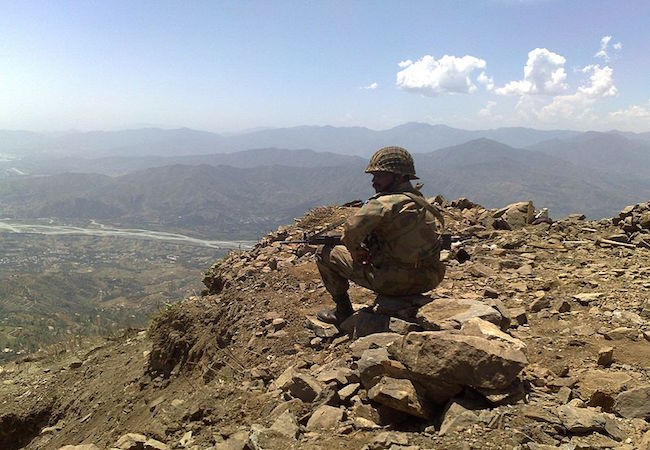
By Ali Raza
Before addressing the core topic, the discussion of various terms like “Military Operation” and non-state actors would be highly essential. Military operation is the coordinated military actions of a state in response to a developing situation. These actions are designed as a “Military Plan” to resolve the situation in the state’s favor.
Military operations can be classified by the scale and scope of force employment, and their impact on the wider conflict. The scope of military operations can be referred to as Theater, this describes an operation over a large, often continental area of operation and represents a strategic national commitment to the conflict such as Operation Barbarossa, with general goals that encompass areas of consideration outside of the military such as the economic and political impacts. Military operation would be called Campaign, it is a subset of the theatre operation, or a more limited geographic and operational strategic commitment such as Battle of Britain, and need not represent total national commitment to a conflict, or have broader goals outside of the military impacts. Battle is a form of military operation which connotes a subset of a campaign that will have specific military goals and geographic objectives, as well as clearly defined use of forces such as the Battle of Gallipoli, which operationally was a combined arms operation originally known as the “Dardanelles landings” as part of the Dardanelles Campaign, where about 480,000 Allied troops took part. Then there is another type of military operation that is termed as Engagement, it describes a tactical combat event of contest for specific area or objective by actions of distinct units. For example the Battle of Kursk, also known from its German designation as Operation Citadel, included many separate engagements, several of which were combined into the Battle of Prokhorovka. The “Battle of Kursk” in addition to describing the initial German offensive operation (or simply an offensive), also included two Soviet counter-offensive operations Operation Kutuzov and Operation Polkovodets Rumyantsev. Finally, the Strike is another form of military operation that connotes a single attack, upon a specified target. This often forms part of a broader engagement. Strikes have an explicit goal, such as, rendering facilities inoperable (e.g. airports), to assassinating enemy leaders, or to limit supply to enemy troops.
A violent non-state actor is an organization that uses illegal violence (i.e. force not officially approved by the state) to attain their political and other goals. Violent non-state actors (VNSAs) pose a pressing challenge to human and national security across the geo-political landscape. VNSAs play a prominent, often destabilizing role in nearly every humanitarian and political crisis faced by the international community. Successfully, countering them is complicated by a host of factors, including the adaptive character of the threat and the difficulty of developing and implementing a coherent strategy that engenders measurable victories.
Causes of military action against non-state actors:
a. Deterring the terrorist groups:-
One of the main objectives of launching a military action against the violent state actors is deterring them and to refrain them from getting their demands fulfilled through use of force.
b. Protecting the Civilians:-
The other main cause of initiating a military action against the non violent state actors is to protect the civilians from the illegal and bloody activities of the non violent state actors, and to mitigate the risks to life and property of the civilians.
c. Advancing the political agenda of country:-
Another reason for launching a military strike against the non state actors is the advancement of political agenda of the country that is likely to be severely affected by the bloody and ruthless activities of non state actors.
d. Preventing growth of other non state actors:-
Military action is also sometimes initiated to create such type of deterrence that could stop the growth of other violent non state actors.
Use of traditional force beneficial or not:
Historical facts show that the unilateral use of the force has never been an answer to resolve the issue of violent non state actors. Although military presence in the area where violent non state actors are actively participating is essential, but on the other side this fact can never be over ruled that presence of military adversely affects the political set up of that particular area. For example, in FATA (Pakistan) presence of military has become a necessity, but the presence of military is having adverse effect on the administrative set-up as the authority of the political agent has been eroded.
Taking long term punitive action against the tribes, including blockades and mass arrests, will not work and will likely lead to a worsened situation. In fact, the militants have welcomed blockades of the area as it deprives the locals of the area of their basic economic needs. In order to handle the situation, there should be a graduated response.
How to tackle the non state actors:
It has been observed that non state actors remain active usually in those areas of the world that are either under developed or developing, where the infrastructure is having many flaws, people are facing socio-economic deprivation. In such a country Political and administrative reforms should be introduced, foreign supply routes and militant network support across border need to be stopped. Communication and Dialogue with the militants and violent non state actors must be continued.




